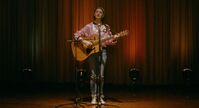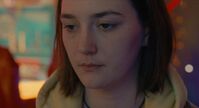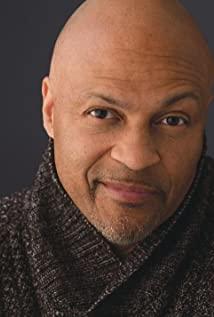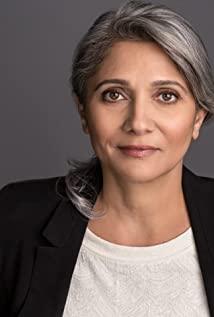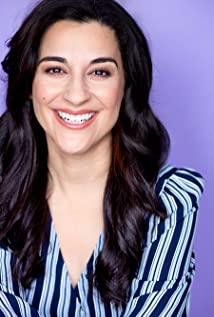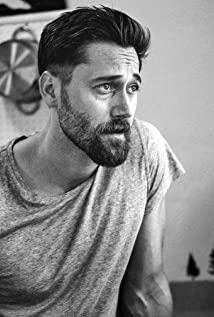Most films don't trust silence, it's like a posturing, and it's easy to be scattered all over the place if you're not careful. "Silence" itself is gradually becoming a symbol of disadvantaged groups. It is a kind of unconscious numbness. Narratives often use this as a leverage to allow the protagonist to constantly break through the shackles and liberate from the high pressure of "don't dare to speak". But eliminating silence is not the purpose of this film, it is trying to figure out what "silence" is?
one. Second night of silence
"Never, Rarely, Sometimes, Always," written by director Eliza Hittman, tells the story of Orton, an introverted 17-year-old who has an unplanned pregnancy. Escorted to New York for an abortion. The story is not torn apart in a very tragic way, and the bland plot makes the film a little disorganized at first glance, but when we follow the two girls out of the town, a fairly familiar journey connects the trivial dilemmas of New York together. Together: From the bitterness of wandering the streets on the first night, to the reconciliation between the heart and the heart on the second night, to the final smooth resolution, the two set off on their return journey. This is a complete "adventure", but it is different from the heroic overcoming obstacles in the past. The two embark on the journey of eliminating the "bad consequences" with a heart that is hard to say. Besides passively guarding against unfamiliar environments, they have no extra strength. Come and take a good look at this adventure.
Interestingly, the wandering on the second night was completely avoidable. In the New York clinic, a careful diagnosis and treatment consultant saw that Orton was shy, and suggested that volunteers help them find a place to live. Ton refused. In contrast to the whole movie, Orton has repeatedly refused such kindness with silence: when he vomited, he would subconsciously block the concerned Kessla from the door, and when the pain was unbearable, he called his mother, but he could only hang up. . The repeated "I'm fine" in her mouth is not pride, nor is she afraid of causing trouble, but a kind of inertia out of self-protection. With her back to her posture and her reticence as her face, silence became her only way of survival. But this does not mean that she has to compromise and seek perfection with the outside world. On the contrary, she silently poured water on the face of the boy who humiliated her, and she could also use this only weapon left to resist her father's ridicule, and she was as silent as possible. possibility of injury. She was reluctant to show weakness, but she also suffered from the enemy: the neglect of her parents, the laughter off the stage, the new life on the B-ultrasound apparatus, all the helplessness must be swallowed together with tears.
It was also on this second night that Kesra revealed her silence. Compared to Orton, her looks and personality make her more popular, but silence goes hand in hand. When supermarket customers are harassed, Kesla, as a cashier, has to influence the smile and politeness, and when handing over the paid income to the administrator, he must also condone the other party's obscenity. She is a sharp-minded girl, so she knows that the advantages of this kind of patience outweigh the disadvantages, she learns to watch her words and consciously use silence to disguise herself. In order to have the funds to go to New York, she was able to steal the money from the cashier without changing her face, precisely because she had long noticed that the administrator had moved the camera angle for the convenience of lewdness. After being familiar with the two-way rule of silence, Skylar is not a weak person in a stereotyped sense. Therefore, in the face of ulterior motives to strike up a conversation with Jasper, a boy in the car with ulterior motives, she still writes down her contact information, which is why she was completely embarrassed on the second night. invitation. As a pragmatist, using silence to create opportunity is Kessler's way of living.
The two girls seemed to form diametrically opposed silences, so that the two did not have a few conversations throughout the trip. On the bus, in the tunnel, an airtight wall stretched across the space between the two. The dispute that broke out on the second night also broke out. Should Jasper be favored for the ticket money? The two silently confronted each other, because they both knew the answer, and at this moment, the silence narrowed their respective circles of protection, leaving them alone. But when Orton found Kessler who was kissing Jasper again, the two girls hooked their fingers lightly across the pillar, which undoubtedly became the most touching scene in the whole film, because the hooked fingers were tacitly understood by the girls. Silence, like the wry smiles of everyone before. Silence is their only courage and wisdom, a bridge they both know well, and communicates every frame of their coexistence.
two. The confrontation between the two clinics
The individual silence from beginning to end runs through the journey of the two girls. In the narrative mode where the omniscient perspective is not opened, we cannot know the cause and effect from the girl's mouth. A kind of silence". It is not until the 60th minute of the film that the meaning of the title is revealed: "Never, Rarely, Sometimes, Always" corresponds to the different options of the questionnaire. This seemingly cold piece of white paper, and the seemingly rigid questions, just made Orton, who had always been expressionless, relaxed. In the face of the consultant's questioning of private questions, the simplest words gradually became the most difficult words for Orton to say. She lowered her eyes and finally cried: "Why are you asking me these?"
Yeah, why are these asking non-abortion-related questions? The film never explained who the father of the child was, including the audience, and everyone except Orton had no way of knowing whether Orton's early pregnancy was caused by ignorance or coercion, and why she had to bear it alone instead of following him. family confided. Everyone vaguely knew the answer, but these questions that should have been posed a long time ago have never been spoken. The detailed inquiries about her personal safety in the New York clinic are the only time in the film to patiently trace the origin, and it is also the closest we get to this taciturn girl's heart.
The road to abortion also forms an ironic contrast: a moment of warmth that is not available in hometown, but can be found in the busy New York city. Children's graffiti hangs on the walls of the town clinic, and flowers are placed to soothe people's hearts, but the doctor always repeats the empty "Are you okay?", using the pregnancy test stick bought from the supermarket to make a professional self-care for Orton. At the same time, he also used a deliberately obscure expression to talk about Orton's pregnancy. Many people justify it from the perspective of privacy, such as being afraid to cross the red line and touch the self-esteem of teenagers, but the image of "questionnaire option" tears away all hypocritical care. The small town doctor seems to have given Orton a thoughtful solution, but to use a few thin adoption and maternity manuals to send this pretentious girl away, it must be said that it is an extremely cold bystander attitude. Hidden within the avoidance approach is a kind of silence from the helper, as if Orton's confusion was just a common arithmetic problem, and the doctor happened to have an equation with a fixed answer.
Looking at Orton with a detached attitude, it is difficult to achieve complete equal treatment. The pressure Orton felt, in addition to the malice of being humiliated on stage, came from the people who were supposed to help. They turned a blind eye to Orton's confusion and reluctance, while habitually comforting her: "I know these things, I'm a mother too," while standing on the commanding heights and gently reminding her that abortion is immoral. The helper seems to consider the problem from the perspective of the beneficiary, but in fact, he imposes his own ideas all the time, and all he gets is silent resistance. Precisely because few people say bluntly: "No matter what your decision is, as long as it is your own decision, it will be fine." When the helpless embark on their own "adventure", what they are always familiar with is inertia. Save yourself.
Another kind of silence intertwined in the form of avoidance and coercion, which together constitute the silence of the majority, which competes with the silence represented by the two girls, and also merges with everything around them. The director makes good use of close-up, Orton's silent face often occupies the entire frame, and there are not many undulating expressions on her face. Many times, a slight frown can cover up the mixed emotions inside. The focus on Orton's face not only magnifies the silence of the individual in the film, but also highlights the silence of the group outside the screen. It is in the silent narrative and documentary lens language that all the trivialities that are simple and common but often overlooked can reveal their true face in the contrast.
Does silent film have power? The answer followed the camera to the operating table, paused for a moment on Orton's slightly bulging abdomen, slowly moved up to her slightly frowning face, and finally came to a hand connected to Orton, silent but powerful, with the two. Like that girl's secret hooking finger, it became an interwoven symbol against another kind of silence.
View more about Never Rarely Sometimes Always reviews




